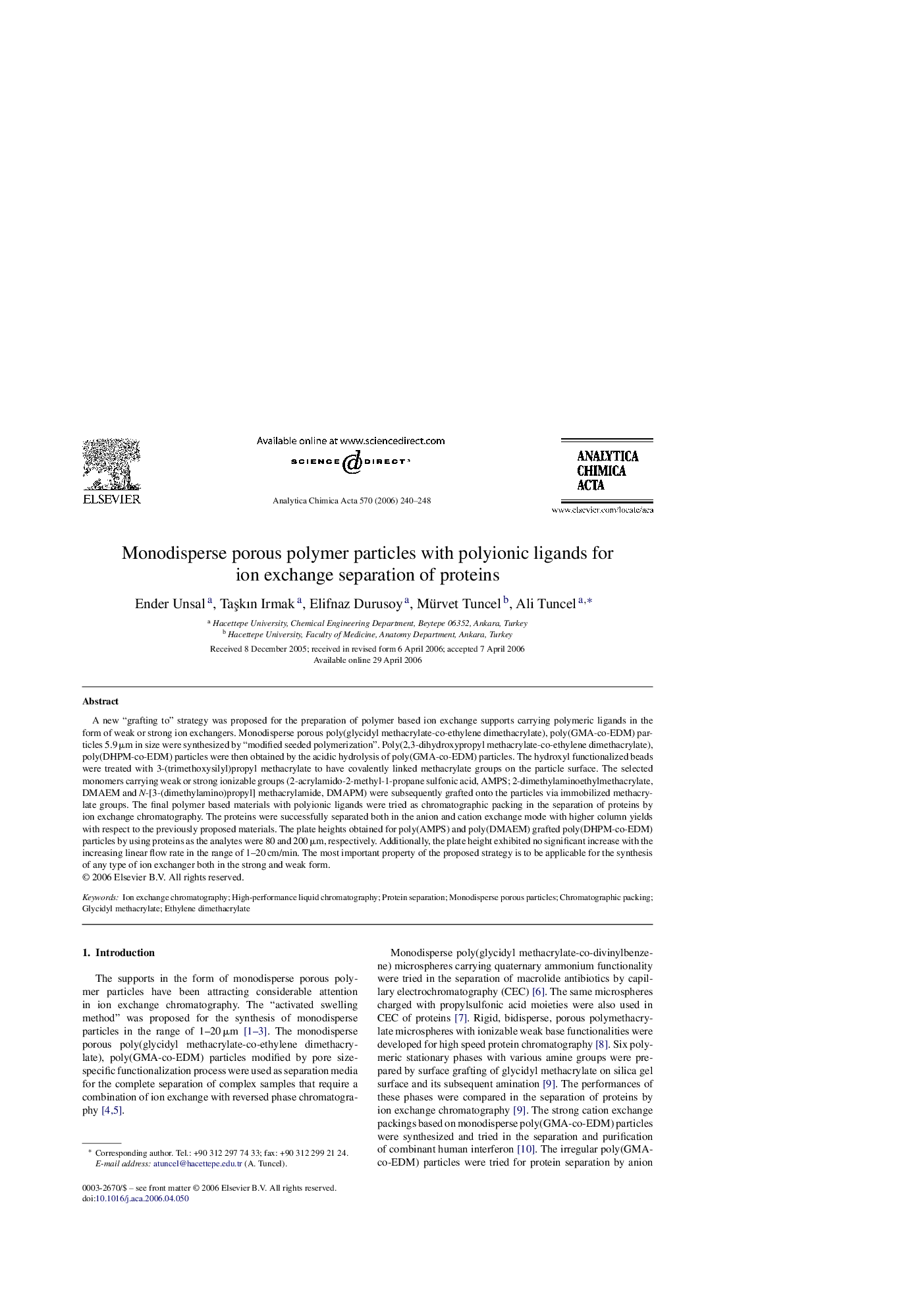| Article ID | Journal | Published Year | Pages | File Type |
|---|---|---|---|---|
| 1172253 | Analytica Chimica Acta | 2006 | 9 Pages |
A new “grafting to” strategy was proposed for the preparation of polymer based ion exchange supports carrying polymeric ligands in the form of weak or strong ion exchangers. Monodisperse porous poly(glycidyl methacrylate-co-ethylene dimethacrylate), poly(GMA-co-EDM) particles 5.9 μm in size were synthesized by “modified seeded polymerization”. Poly(2,3-dihydroxypropyl methacrylate-co-ethylene dimethacrylate), poly(DHPM-co-EDM) particles were then obtained by the acidic hydrolysis of poly(GMA-co-EDM) particles. The hydroxyl functionalized beads were treated with 3-(trimethoxysilyl)propyl methacrylate to have covalently linked methacrylate groups on the particle surface. The selected monomers carrying weak or strong ionizable groups (2-acrylamido-2-methyl-1-propane sulfonic acid, AMPS; 2-dimethylaminoethylmethacrylate, DMAEM and N-[3-(dimethylamino)propyl] methacrylamide, DMAPM) were subsequently grafted onto the particles via immobilized methacrylate groups. The final polymer based materials with polyionic ligands were tried as chromatographic packing in the separation of proteins by ion exchange chromatography. The proteins were successfully separated both in the anion and cation exchange mode with higher column yields with respect to the previously proposed materials. The plate heights obtained for poly(AMPS) and poly(DMAEM) grafted poly(DHPM-co-EDM) particles by using proteins as the analytes were 80 and 200 μm, respectively. Additionally, the plate height exhibited no significant increase with the increasing linear flow rate in the range of 1–20 cm/min. The most important property of the proposed strategy is to be applicable for the synthesis of any type of ion exchanger both in the strong and weak form.
